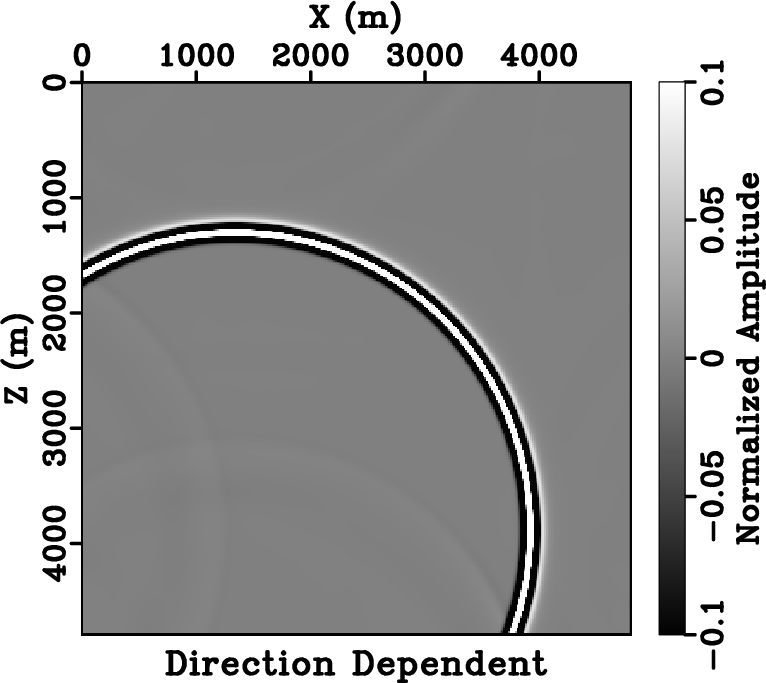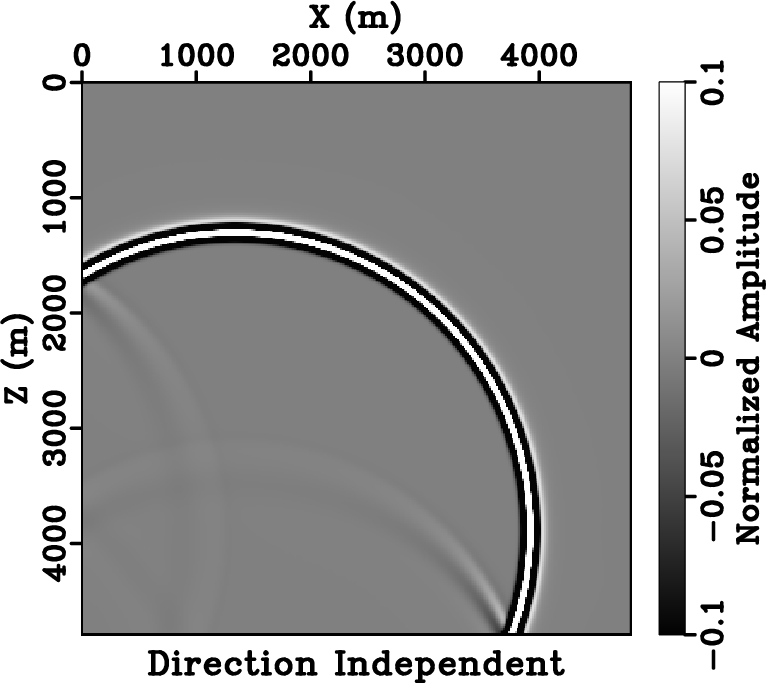|
|
|
|
Lowrank one-step wave extrapolation for reverse-time migration |


|
|---|
|
cwavesnapgain,cwave2snapgain
Figure 10. Comparison between wavefield propagated with the direction-dependent absorbing boundary condition (a) and wavefield propagated with the direction-independent absorbing boundary condition (b). The amplitude has been normalized to |
|
|
In the next example, we incorporate the propagation-direction-dependent absorbing boundary condition in the wave extrapolation operator to attenuate waves reaching the boundary. The absorbing boundary defined by equation 26 does not attenuate any energy if the wave propagates parallel to the boundary, and reaches maximum damping when the wave propagates normal to the boundary. This property reduces artificial reflected energy at large incident angles. Figure 10 compares the propagation-direction-dependent absorbing boundary condition with a conventional direction-independent absorbing boundary condition (tapering) using a point-source wavefield. After normalization and clipping for display, the direction-dependent absorbing boundary condition proves to be more effective at wide-incident angles. In isotropic wave propagation, we observed that the direction-dependent absorbing boundary condition may increase the rank of the lowrank approximation because of induced anisotropic attenuation of wave propagation. One possible way to decrease the cost is to implement the absorbing boundary condition separately from the wave extrapolation process, using partial Fast Fourier Transforms (Ying and Fomel, 2009). In this way, the cost of absorbing boundaries can be marginal compared to the cost of wave extrapolation.
|
|
|
|
Lowrank one-step wave extrapolation for reverse-time migration |